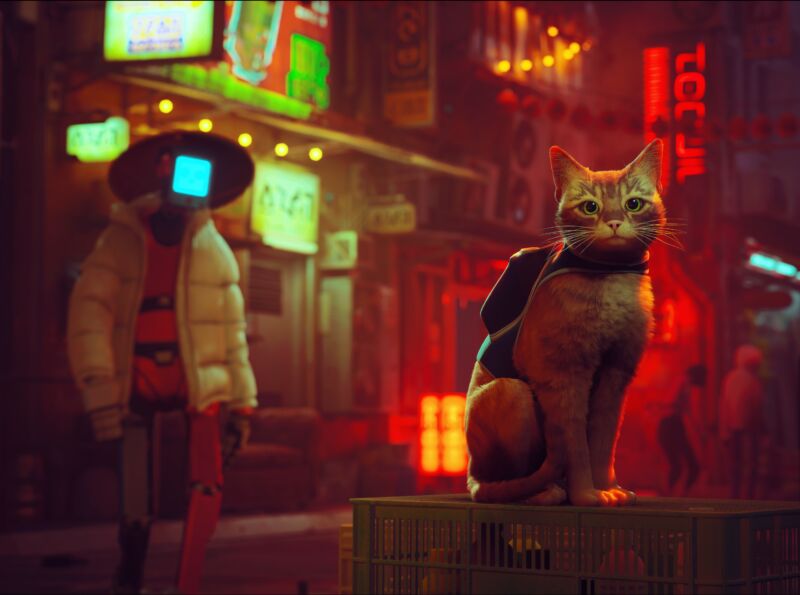
The indie gaming genre of "silly animal exploration" has produced a bunch of fun and unique experiences. We've loved pantomiming as the following: hellraising goats, car-driving bears, and (if you'll allow it into the genre) bendy, walking slices of bread.
But three years ago, Untitled Goose Game propelled the genre to its zenith. Its production values, accessibility, and uniquely dry sense of humor were a noticeable step up from the genre's typical "glitching barnyard animal" gimmick, and the result was a breakout hit. At that point, I quietly wondered: Where else can video games featuring unexpected animal heroes go?
The answer, delivered by this week's Stray, is quite compelling. This brief yet memorable adventure is a refined take on the concept, as if it were made by an arthouse film studio. It lands somewhere between the eerie, atmospheric exploration of the first Half-Life and the childlike whimsy of a classic Studio Ghibli film. And it stars a cat: not an unrealistic talking cat with bulging eyes and Acme-brand hammers, but a puzzle-solving, nap-taking, tiny-hole-exploring cat who scurries on four paws and pretty much always lands on its feet.
Crucially, the developers at the new studio BlueTwelve nail an important contrast. The developer's realistic take on a domesticated virtual cat, as much in its aesthetic as its controls, somehow fits perfectly in a surreal underground world full of robots, neon lights, and mysteries. In fact, this contrast helps the game draw out humor one moment and kindness the next—which is one of many reasons I recommend playing Stray right meow.
Did you say meow?
-
Real-time rendering of the game's hero, as captured on PC.
-
A brief tease of the sun, which you don't see much of in Stray.
-
Someone knows we're here.
-
Hilariously, when you walk over functioning keyboards in Stray, they register whatever keys your paws are standing on.
-
Things change upon discovering this little robot, which your cat instinctively paws at.
-
An awakening.
I'll admit, I've been tempted to unleash all of my favorite cat puns on this review, but that would betray the game's earnestness. Stray aspires to be more than the kind of meme explosion you might expect from "video game starring a housecat," though if it makes you feel any better, the names of the game's achievements and trophies are utter groaners. (When your unnamed cat gets trapped at one point, an achievement lights up with the phrase "Al-Cat-Traz.")
Stray's zero-dialogue introduction suggests that players are in for an isolated experience, one where you—and your dedicated "meow" button—traverse an empty world with little response. Fortunately, the game changes up its scenery, and you eventually land (yes, on all fours) in a world with its own language and social norms.

Conveniently, one of its residents takes a liking to you, then figures out that it can open up communication between you and everyone else... if it slips a high-tech harness over your body. As a cat, you immediately hate this thing, and you visibly struggle, the way you'd expect from any cat being forced by an owner to, say, dress up like a character from Firefly. ("Who's my little Meow-colm Reynolds? You are!") But after some squirming, you make peace with the device since it opens up your ability to understand what's going on. The harness doesn't convert your noises into words, however. This thing only offers one-way communication. That's one way to stick to a Gordon Freeman archetype.
Your appearance suggests to everyone that there may be an escape from this sunless, underground world—as you're somehow able to evade certain nasty monsters found between the environment's outposts. "Can you help us?" becomes a common refrain among the people you chat with. As a cat, you can get into places that the people you meet cannot, so you're often asked to slink around and find lost items or occasionally examine the world around you to solve puzzles like deciphering a code for a safe.
reader comments
162